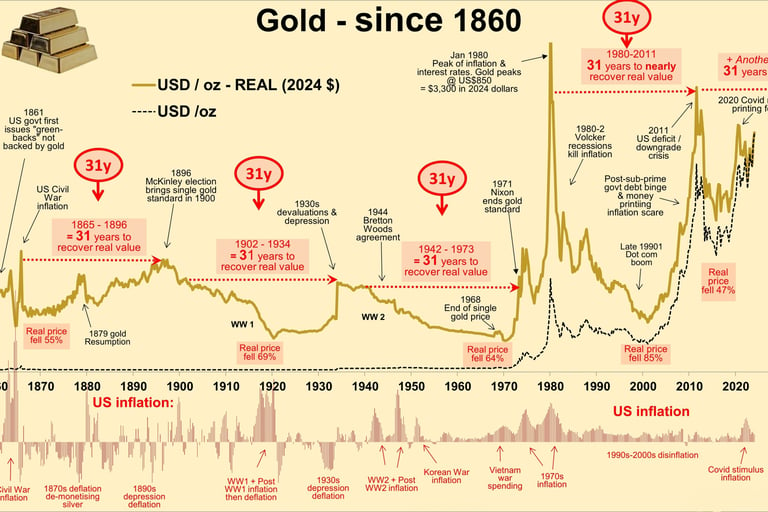The Enduring Legacy of Gold: A Strategic 5% Allocation in the Numericon Balanced Portfolio
Discover the timeless value of gold in the Numericon Balanced portfolio. From its ancient origins, tied to myths like Nibiru, to its modern role as an inflation hedge post-gold standard, this article explores gold’s evolution and strategic 5% allocation in a buy-and-hold strategy, designed to limit daily portfolio downside to 1% while enhancing long-term stability.
9/19/20252 min read




This narrative, popularized by scholars like Zecharia Sitchin, underscores gold's primordial value as a scarce, durable resource, prompting early humans to mine and venerate it as a divine gift. Over time, gold's role evolved from ritualistic adornment in Egyptian pharaohs' tombs to a cornerstone of commerce: by the Bronze Age, it facilitated trade across Mesopotamia and the Mediterranean, prized for its malleability and resistance to corrosion. In daily life, civilizations like the Romans and Incans incorporated gold into coinage, jewelry, and even culinary applications, embedding it in economic and cultural fabrics worldwide.
Gold has captivated humanity for millennia, its allure rooted in both practical utility and profound symbolism. In ancient Sumerian lore, as interpreted through cuneiform tablets, the Anunnaki, extraterrestrial beings from the mythical planet Nibiru, allegedly descended to Earth approximately 450,000 years ago to extract gold, essential for repairing their planet's deteriorating atmosphere.
However, mounting pressures from Vietnam War spending, domestic inflation, and persistent U.S. trade deficits led to gold outflows, straining the system. On August 15, 1971, President Richard Nixon announced the "Nixon Shock," suspending the dollar's convertibility to gold and imposing wage-price controls. This decoupling birthed the era of floating exchange rates and fiat money, unleashing volatility but also affirming gold's role as a non-correlated asset during inflationary spirals, as evidenced by its outperformance in the 1970s stagflation.


As societies advanced, gold solidified its position as a bulwark against economic instability, particularly as an inflation hedge. Its intrinsic scarcity and universal acceptance made it a natural store of value, contrasting with depreciating fiat currencies. This principle underpinned the gold standard, formalized in the 19th century and enshrined globally via the 1944 Bretton Woods Agreement, which pegged major currencies, including the U.S. dollar, to gold at $35 per ounce, with the dollar serving as the anchor for international trade.


In the Numericon Balanced portfolio, a buy-and-hold(ish) strategy designed for long-term stability, we incorporate gold's timeless resilience without attempting to time market cycles, as asset performance remains inherently unpredictable. Accordingly, we allocate 5% to gold, calibrated precisely to constrain the portfolio's aggregate daily downside to a maximum of 1%, thereby enhancing overall risk-adjusted returns without overexposing to any single asset's volatility. This modest weighting ensures diversification benefits, smoothing equity and bond fluctuations while positioning the portfolio to capture gold's countercyclical strengths.
Embracing gold in moderation within the Numericon Balanced framework not only honors its ancient provenance but also fortifies modern portfolios against uncertainty, fostering enduring prosperity in an ever-evolving financial landscape.